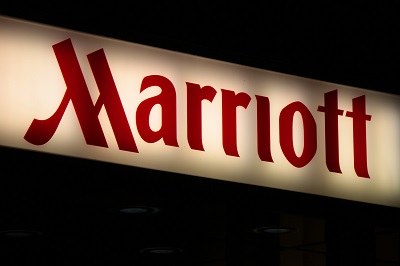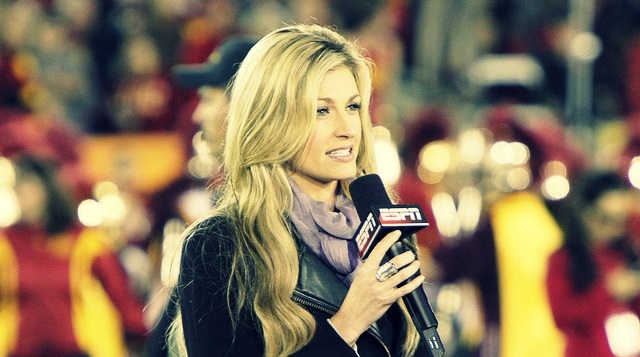Who is Really at Fault?
No one was ready for the calamitous events that would begin to unfold in 2008. Not Erin Andrews, not her stalker Michael David Barrett, and certainly not the owners of the Marriott hotel who would eventually be sued for more than $26 million. The issue of risk mitigation seemed all but irrelevant until it was time for the hotel to defend itself during a very public trial. For all involved, issues of privacy, risk, insurance, and liability were set out in plain view.
 It all began during a seemingly routine hotel stay in Nashville, Tennessee--Erin Andrews, a well-regarded Fox Sports correspondent booked a room and assumed her safety (she was working for ESPN at the time). She was then unknowingly filmed in the nude by her stalker, Michael Barrett (who intentionally sawed off part of the peep hole to her door in order to easily film her). The video went viral, viewed millions of times on the Web. Andrews’ assumed privacy and safety had been a rouse, and because the hotel staff informed Barrett that she would be staying there, liability became the topic of discussion. West End Hotel Partners, which owns and operates Nashville Marriott at Vanderbilt University where Andrews was staying, had hardly accounted for the need for a risk mitigation strategy that would address exposures indirectly related to their operations. But the murkiness of this case begs the question of what hidden risks were present. Each hotel is independently operated—does each location come with unique risks? Who is liable if a patron commits a crime; or, as in this case, commits a crime using information garnered by hotel staff? Risk mitigation involves taking steps to reduce the likelihood that some risk will come to fruition, resulting in a loss. Part of this work should take into account those risks that aren’t easily seen.
It all began during a seemingly routine hotel stay in Nashville, Tennessee--Erin Andrews, a well-regarded Fox Sports correspondent booked a room and assumed her safety (she was working for ESPN at the time). She was then unknowingly filmed in the nude by her stalker, Michael Barrett (who intentionally sawed off part of the peep hole to her door in order to easily film her). The video went viral, viewed millions of times on the Web. Andrews’ assumed privacy and safety had been a rouse, and because the hotel staff informed Barrett that she would be staying there, liability became the topic of discussion. West End Hotel Partners, which owns and operates Nashville Marriott at Vanderbilt University where Andrews was staying, had hardly accounted for the need for a risk mitigation strategy that would address exposures indirectly related to their operations. But the murkiness of this case begs the question of what hidden risks were present. Each hotel is independently operated—does each location come with unique risks? Who is liable if a patron commits a crime; or, as in this case, commits a crime using information garnered by hotel staff? Risk mitigation involves taking steps to reduce the likelihood that some risk will come to fruition, resulting in a loss. Part of this work should take into account those risks that aren’t easily seen.
Risk Mitigation and Captives
A jury heard testimony from all three parties and concluded that Barrett and the hotel were liable for damages experienced by Erin Andrews. Barrett was arrested and served two years in prison. Erin Andrews eventually won her civil lawsuit and was awarded a total of $55 million. But here is where it gets interesting: the jury found Barrett to be 51 percent at fault and required him to pay more than $28 million. West End Hotel Partners was found to be 49 percent complicit and was required to pay more than $26 million. As a well-recognized corporation, Marriott has insurance in place to sustain itself after losses occur. But Marriott’s attorneys argued that Barrett was the person who should take full responsibility, as Barrett was the one who performed the act. What Marriott didn’t take into account ahead of time is that the organization would have to bear some liability for the inadvertent actions taken by its staff, even if those actions did not directly break any laws. That is, hidden risks can contribute to corporate loss in unexpected ways.

For closely-held midmarket businesses, risk mitigation is fundamental to business stability. It’s the commitment to keeping operations running like a well-oiled machine and to recognize risks preemptively. This brings us to lesson #1: In the pursuit of a captive insurance arrangement (an insurance company specifically formed to insure the risks of an affiliated company), businesses should veer away from programs that focus solely on risks that have a precedent and a competitive insurance market with reasonable rates. Instead, an objective on-site feasibility study should be conducted to determine what risks (both ‘hidden’ and overt) actually exist within a business. Thereafter, captive insurance coverages can be designed to fully address the risks of the organization. In general, careful examination of risks can avoid being caught off guard. Learning this lesson early on and including it in a sound risk mitigation strategy can position organizations to anticipate the financial impact of a lawsuit or claim.
The Realities of Risk
The story of Erin Andrews, Michael Barrett, and Marriott was sensationalized in the media, drawing public attention with more and more veracity after each milestone in the case. To some, the story held entertainment value; a situation that might only happen to big-named celebrities. We should be aware that although this is a unique, media-frenzied case, many businesses in manufacturing, construction, retail, healthcare, and other industries carry real hidden risks as well. This is lesson #2. No industry is immune to the ramifications of underinsurance. Be it a weather-related incident, equipment breakdown, pollution/environmental event, or even if a reputational collapse, midmarket companies of all types must contend with hidden risks and make informed decisions about risk mitigation.
 If a particular exposure is identified and insurable, business owners are empowered to self-insure by way of a captive or, they can see if coverages are available in the commercial marketplace. Some specialized coverages are sold by well-known insurers, but since they are deemed ‘uncommon’ or ‘nonstandard,’ they are offered at a higher premium. Under a captive insurance arrangement, coverages are tailored to meet the unique needs of the businesses they insure and the overall costs of insuring a business is statistically lower. Realizing the need for comprehensive coverage is the first step toward financial permanence in light of these more ‘obscure’ potential losses. As seen in the Erin Andrews case and many other publicized accounts, businesses that ignore unseen risks may be doomed to experience the repercussions of their inactions.
If a particular exposure is identified and insurable, business owners are empowered to self-insure by way of a captive or, they can see if coverages are available in the commercial marketplace. Some specialized coverages are sold by well-known insurers, but since they are deemed ‘uncommon’ or ‘nonstandard,’ they are offered at a higher premium. Under a captive insurance arrangement, coverages are tailored to meet the unique needs of the businesses they insure and the overall costs of insuring a business is statistically lower. Realizing the need for comprehensive coverage is the first step toward financial permanence in light of these more ‘obscure’ potential losses. As seen in the Erin Andrews case and many other publicized accounts, businesses that ignore unseen risks may be doomed to experience the repercussions of their inactions.
Showing Strength Despite Exposure
Although Erin Andrews won a monetary award of $55 million, experts believe she will not receive the full figure. As reported by CNBC, “Tennessee, where the trial took place, is one of 18 states where a defendant is only responsible for paying his/her/its share of the damages they caused, subject to certain exceptions, according to a recent survey by the law firm, Wilson Elser. If the judge decides an exception applies, it could make the hotel responsible for the whole $55 million.”
Appeals and post-trial motions may affect the true outcome of this case.
CNBC also reported that “A court may conclude that the hotel should have foreseen that, by negligently sharing Ms. Andrews' hotel information with Barrett and agreeing to put him in the room next door, Barrett would intentionally videotape Andrews resulting in all of the harm to her that followed. The Tennessee Supreme Court has said that, if the victim of wrongdoing can show all of that, a negligent party like the hotel may be responsible for paying for the damages caused by Barrett.”
Many losses (resulting in claims) can seem exhaustive. If a business owner has gaps in insurance, the aftermath may be even more detrimental to the business. Revenue loss, business interruption, legal costs, loss of a major customer, loss of key employees—all of these risks might come into play. This brings us to lesson #3: Work with a captive planning team that can partner with you to prepare the business for a significant loss event; one that can support your business on an ongoing basis. This includes the design of broader insurance policies that can address the long-term effects of loss, keeping the business afloat.
When forming a captive insurance company, it is integral to have tax, legal, and insurance expertise at your disposal to navigate the complexities of changing regulatory guidelines, laws, and more.
The term “turnkey” has been used rather loosely in the captive industry to define a suite of planning services. Oftentimes, these services are outsourced to individuals who have little investment to each client. In many cases, services such as legal representation are not included.
The nature of risk and the ongoing maintenance of a captive insurance program requires tenacity, experience, and a fortitude toward doing things by the books. Working with a true turnkey captive planning team is the first step toward taking a more detailed, critical approach to identifying legitimate exposures. It is an ambitious risk mitigation approach that will keep a business intact despite hidden risks and consequential losses.
Sources:
CNN, Money Erin Andrews awarded $55 million in suit over nude video
CNBC, Will Erin Andrews really get $55 million?
ABC News, Erin Andrews Awarded $55 Million in Lawsuit
Photo Attribution: Neon Tommy, License




